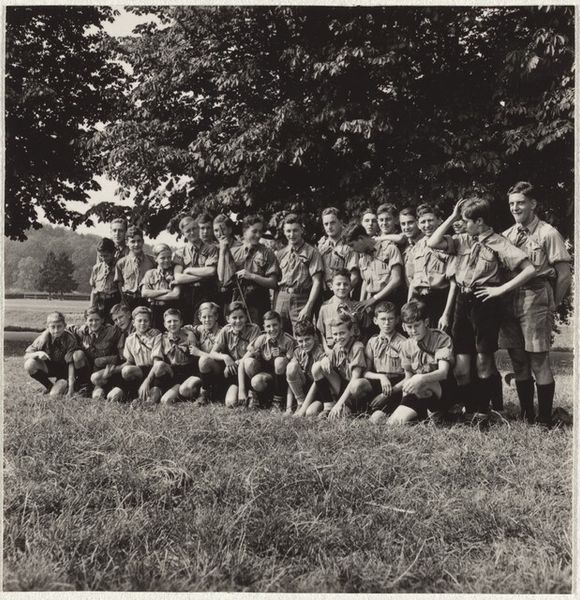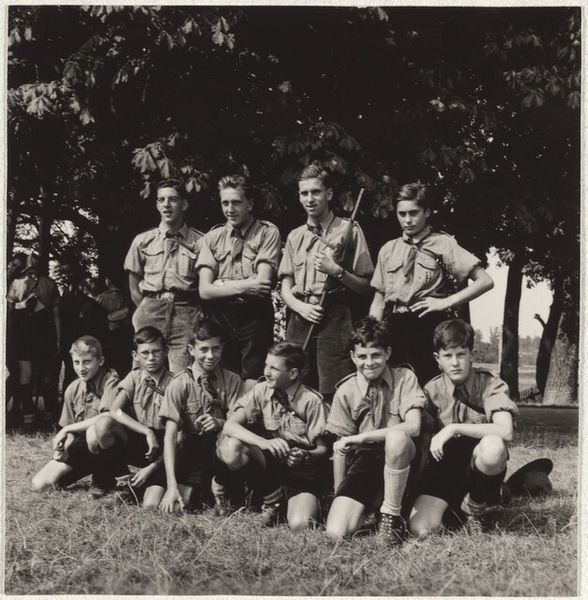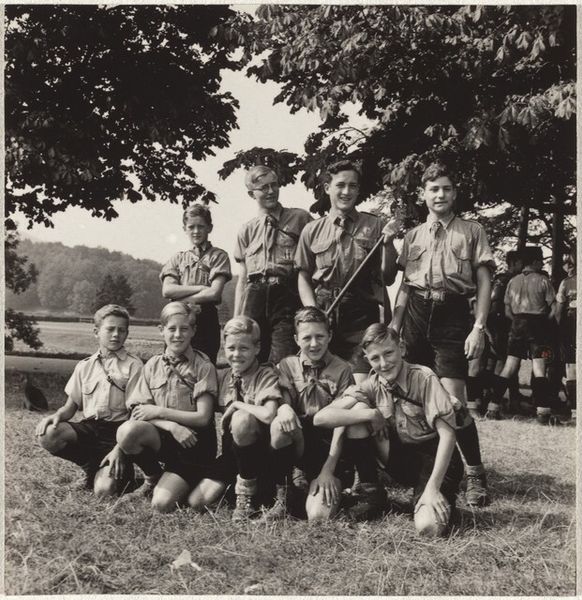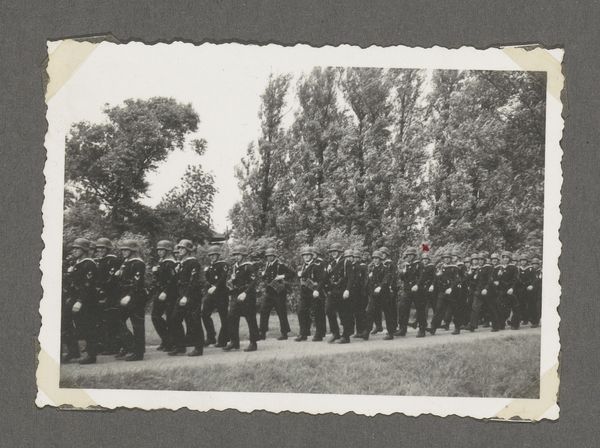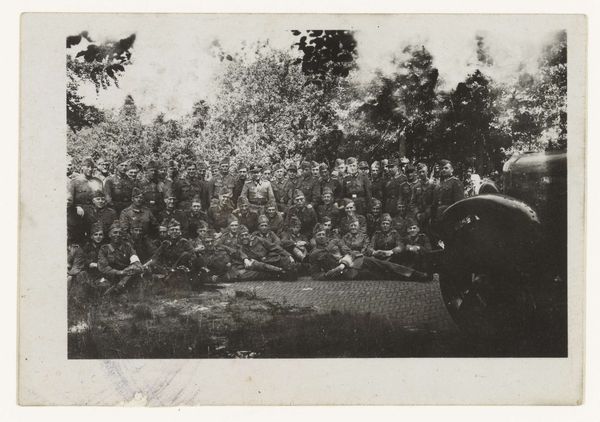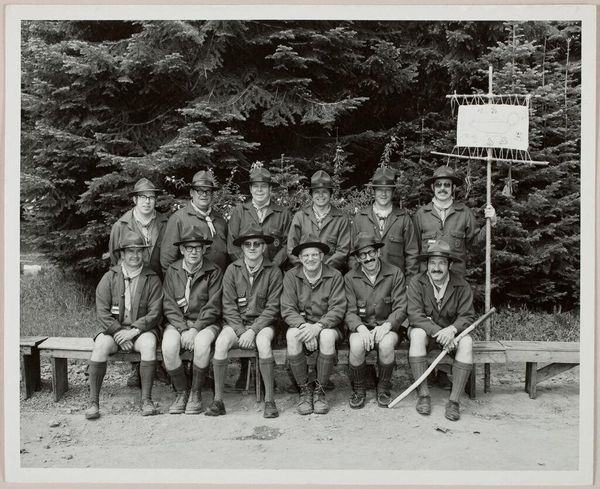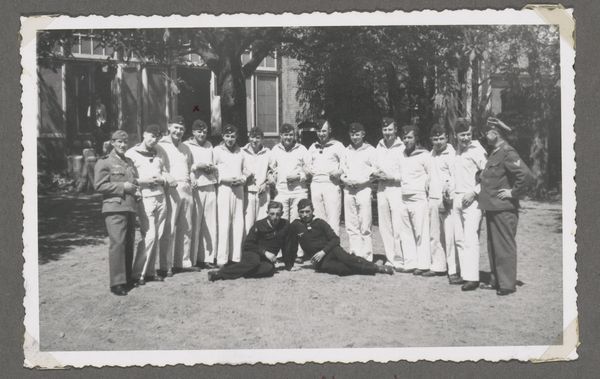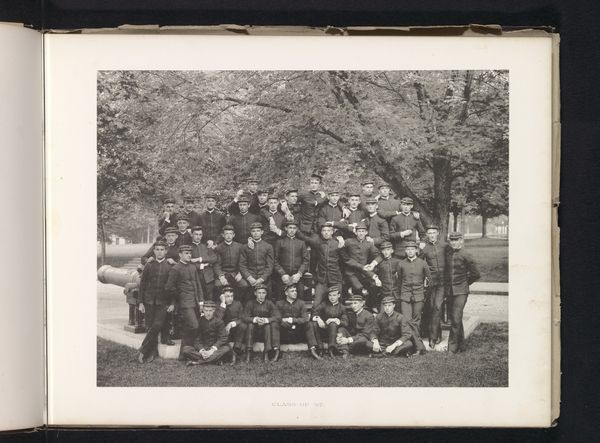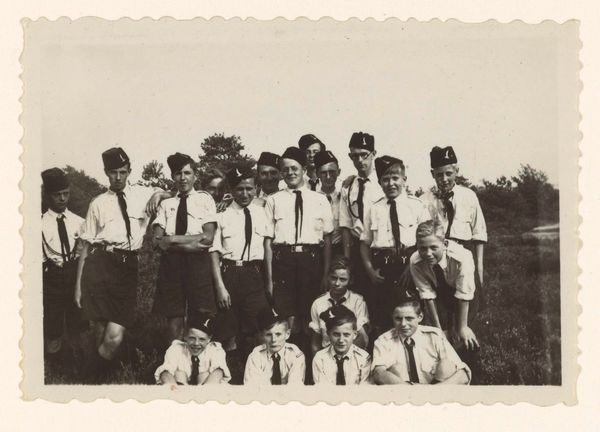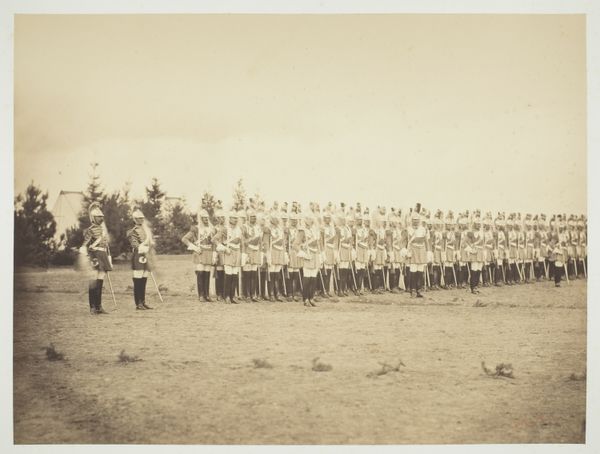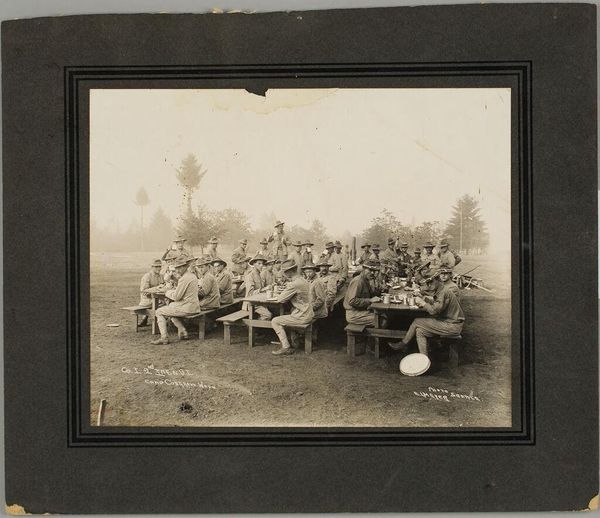
print, photography
# print
#
landscape
#
photography
#
group-portraits
#
monochrome photography
#
realism
#
monochrome
Dimensions: sheet (trimmed to image): 5.7 x 5.5 cm (2 1/4 x 2 3/16 in.)
Copyright: National Gallery of Art: CC0 1.0
Curator: Let's consider this photograph by Robert Frank, called "Boy Scouts," circa 1941. It's a monochrome print. My first thought is, what a formal and slightly melancholy arrangement for what I assume are boys just trying to have a good time. Editor: Yeah, it hits me kind of heavy too. The tonality is dark; the subject matter, while seemingly wholesome, feels laced with some kind of… weight? Look how they're framed, almost swallowed by the darkness of the large tree in the background. It reminds me a bit of how we try to organize and regiment youth, package them into neat little boxes, even then. Curator: Precisely. The material conditions are important here. Think about the socio-political environment around 1941. Pre-war anxieties, the pressure of conformity, all filtered through Frank's lens. These uniforms aren't just clothing; they represent a set of expectations, a role within a larger social structure. And that specific type of dark print lends to this atmosphere very vividly, it suggests something tangible. Editor: I wonder about the choice to use photography to render such an image in almost total stillness, right. What stories do these individuals carry, captured just before that inevitable turning point? Each face, especially in that middle row, feels like a little universe brimming with untold narratives. It also shows something quite personal, I can imagine his framing choices. Curator: Indeed. It asks us to consider photography itself as a manufactured object. From the specific emulsion used, the camera, the lighting, even the way the print has aged...all contribute to its meaning. Each process indicates deliberate design, or at least, intent, that we should read not simply as "documentary". What can all this tell us? The photograph stands in as a physical residue of culture. Editor: Makes you ponder the ephemeral nature of moments captured and what happens when it outlives them! Perhaps even challenges how we understand what makes art. It is not the representation itself, or these boys, or its photographic material. It is, ultimately, the emotion and human spirit it still echoes today. Curator: Nicely said, something to be remembered next time you come across this work, indeed.
Comments
No comments
Be the first to comment and join the conversation on the ultimate creative platform.
